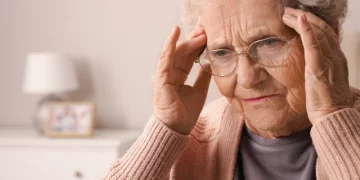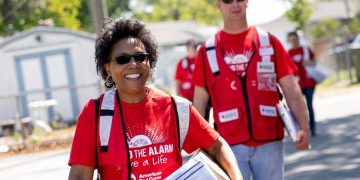In an increasingly age-segregated society, the natural bonds between young and old have been quietly eroded. Children are taught by teachers of a similar age, socialize with peers, and are often raised by parents who themselves are stretched thin. Meanwhile, older adults frequently live in senior housing or care facilities, often with limited contact with younger generations. This age divide is more than a social inconvenience—it is a missed opportunity. A growing body of evidence now shows that intergenerational programs, which intentionally bring together people from different age groups in structured, meaningful ways, are powerful tools not just for promoting empathy and understanding, but also for enhancing mental health across the lifespan. These initiatives are fostering joy, purpose, and emotional resilience for both young and old, helping communities heal from loneliness, ageism, and isolation.
Why Age Integration Matters
Intergenerational connection is a natural aspect of human culture. In many traditional societies, grandparents play an integral role in raising children, passing down stories, skills, and values. But in modern industrialized societies, mobility, technological changes, and urban design have disrupted these multigenerational bonds. As a result, both children and elders often experience increased levels of loneliness and social fragmentation. Young people may lack the guidance and perspective that elders can offer, while older adults are deprived of the vitality and creativity that youth bring. Mental health challenges, including depression, anxiety, and cognitive decline, are exacerbated by social disconnection. Rebuilding bridges between generations is not a nostalgic act—it is a necessary step toward restoring emotional health and community resilience.
Mutual Mental Health Benefits
The mental health benefits of intergenerational programs are both profound and reciprocal. For older adults, especially those who are retired, widowed, or experiencing cognitive decline, participating in youth-centered programs has been shown to reduce depression, sharpen cognitive functioning, and increase feelings of usefulness and self-worth. Children and teens, on the other hand, often gain emotional regulation skills, increased self-esteem, and improved empathy through contact with caring elders. In programs where elders mentor youth, students often show increased academic motivation and social confidence. When youth serve as digital tutors for seniors, both parties benefit—elders gain new skills, while youth develop patience, leadership, and a deeper appreciation for aging. These cross-generational exchanges create a sense of belonging and community that is difficult to replicate in age-homogenous settings.
Schools and Senior Centers: From Silos to Shared Spaces
Some of the most successful intergenerational programs are those that break down the institutional walls that separate age groups. For instance, schools that integrate senior volunteers into the classroom find that reading comprehension and attention span improve among students, while seniors report feeling energized and valued. On the other end, assisted living facilities that host preschool classrooms or after-school programs see increased resident engagement, reduced dementia-related agitation, and a livelier community atmosphere. These models are not hypothetical; they exist in places like the Intergenerational Learning Center in Seattle and the United Kingdom’s “Generations Together” projects. By creating shared spaces for play, storytelling, gardening, or art-making, these programs transform routine environments into vibrant intergenerational hubs.
Combating Ageism and Stereotypes
Ageism is one of the most pervasive and socially accepted forms of discrimination, often reinforced by media, workplace culture, and even healthcare systems. Young people are portrayed as entitled or apathetic; older adults as irrelevant or burdensome. Intergenerational programs directly challenge these stereotypes by fostering authentic relationships between individuals. When a teenager helps a grandmother master a smartphone, or a retired carpenter teaches woodworking to middle schoolers, both sides are seen in a new light. These exchanges allow for the sharing of wisdom, humor, vulnerability, and humanity. In doing so, they combat the dehumanizing tendencies of age-based assumptions and promote a more inclusive social narrative that values people at every stage of life.
Mental Health Through Purpose and Role
A key component of mental wellness is the experience of having a meaningful role in one’s community. Intergenerational programs offer just that. Elders, who often feel marginalized in a youth-oriented culture, are invited to be storytellers, mentors, teachers, and cultural bearers. Their life experiences are not only respected—they are central to the program’s design. Youth, often underestimated for their potential to contribute, are empowered to be tech tutors, creative collaborators, and energetic companions. This exchange of roles—elders learning from youth, youth learning from elders—creates a dynamic of mutual respect and engagement. Participants are no longer passive recipients of care or education but active agents in a shared journey of growth and connection.
Creative Expression Across Ages
One of the most vibrant expressions of intergenerational collaboration is found in the arts. Painting, music, theater, and storytelling are natural bridges between generations. In community theater programs, seniors and teens co-create plays based on life stories. In visual arts workshops, children and elders paint murals that reflect shared values and collective memory. Music programs, such as intergenerational choirs, allow for the fusion of old songs and new voices, harmonizing not just melodies but experiences. These artistic endeavors are inherently therapeutic. They offer space for emotional release, reflection, and celebration. They also provide tangible outcomes—performances, exhibitions, recordings—that reinforce a sense of achievement and pride for all involved.
Digital Literacy as a Two-Way Bridge
In today’s tech-centric world, the digital divide between generations has significant implications for mental health. Seniors who lack digital skills may feel excluded from social conversations, family updates, and vital information. Youth, while tech-savvy, may lack emotional guidance in navigating an always-connected world. Intergenerational digital literacy programs are addressing this gap. In “Tech Buddies” programs, teens teach elders how to use email, video calls, or social media, while older adults share wisdom on critical thinking, privacy, and managing information overload. These exchanges build emotional intelligence alongside technical competence, reducing digital isolation for elders and creating reflective dialogue for youth. The very act of learning together fosters trust and laughter, key ingredients for mental well-being.

Cultural Continuity and Healing
Intergenerational programs are particularly powerful in communities with rich cultural heritages at risk of being lost. When elders share traditional practices—such as cooking, dance, language, or crafts—with younger generations, they affirm identity and continuity. For Indigenous, immigrant, or diasporic communities, this cultural transmission is also a form of healing. It reconnects people to their roots, affirms dignity, and resists the erasure often imposed by dominant cultures. Youth feel pride in their ancestry, while elders see their culture valued and sustained. These connections are more than symbolic—they are deeply therapeutic, reinforcing identity, belonging, and resilience.
Designing Effective Intergenerational Programs
The success of intergenerational programs depends on thoughtful design. One-time events, while pleasant, often fail to build lasting relationships. Sustainable programs should be regular, reciprocal, and rooted in real community needs. It’s important to involve both age groups in the planning process, ensuring that the activities are engaging, respectful, and inclusive. Training facilitators in intergenerational communication, trauma sensitivity, and cultural awareness is also crucial. Programs must be accessible in terms of transportation, physical space, and timing. For example, morning sessions might work better for seniors, while afternoons suit school schedules. Incorporating feedback loops and evaluation mechanisms helps ensure the programs remain responsive and effective.
Challenges and Solutions
While the benefits are clear, intergenerational programming is not without challenges. Logistical issues—such as transportation, accessibility, or scheduling—can create barriers to participation. Differences in energy levels, communication styles, or cultural expectations can lead to misunderstandings. Some elders may be uncomfortable with youth who appear overly casual; some youth may find older adults slow or intimidating. These challenges can be addressed through orientation sessions, ice-breakers, and clear expectations. Building in time for reflection and feedback allows participants to voice concerns and learn from one another. When these difficulties are navigated with care, they become opportunities for deeper learning and connection.
Policy and Community Support
Scaling intergenerational programs requires support at both the policy and grassroots levels. Schools, care facilities, community centers, and local governments must recognize the mental health value of age integration and invest accordingly. This includes allocating funding, creating cross-sector partnerships, and embedding intergenerational principles into curricula and community planning. Policies that encourage age-friendly cities—those that promote interaction across age groups in public spaces, housing, and transportation—are crucial. Community leaders, educators, healthcare providers, and youth organizations all have a role to play in advocating for and sustaining these programs.
The Future of Mental Wellness Is Intergenerational
As we look toward more inclusive, compassionate, and mentally resilient communities, the role of intergenerational programs cannot be overstated. They remind us that wisdom is not bound by age, and that healing often comes through connection. Whether it’s a grandparent figure helping a teen navigate school stress, or a child teaching a senior to FaceTime their family, these moments ripple outward. They strengthen mental health not just for individuals, but for entire communities. In an era marked by isolation, division, and rapid change, bridging the age gap is not just beneficial—it is essential. The future of mental wellness depends on the relationships we forge across generations today.

















































